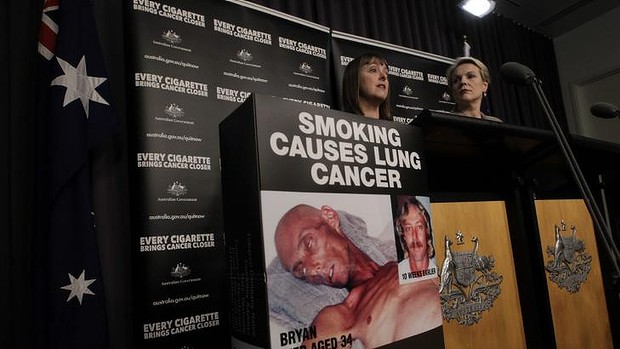Tobacco companies have denied that plain-packaging laws contributed to a plunge in smoking.
Cigarette sales “actually increased” in the first year after plain packaging was introduced, a spokesman for Philip Morris said.

The National Drug Strategy Household Survey recorded a decline in the smoking rate that coincided with the introduction of plain packaging laws. Its report was released this week.
The smoking rate dropped from 15.1 per cent in 2010 to 12.8 per cent in 2013. Plain-packaging laws came into effect in December 2012.
Tobacco researchers say the figures are significant evidence that plain packaging works, and represent one of the great achievements in public health campaigning.
But Philip Morris Limited director of corporate affairs Chris Argent said any suggestion that plain packaging was responsible for the decline in smoking was “simply untrue”.
There had been five tax increases over the same period, including the largest single cigarette tax increase in history of 25 per cent in 2010.
“The fact remains that in the first year following the introduction of plain packaging, cigarette sales actually increased,” Mr Argent said.
“Governments have a responsibility to base policies on evidence and facts, not ideological rhetoric. When government polices prove not to be effective, they should be thrown out entirely.”
The survey also recorded an increase in smoking among adolescents, from 2.5 per cent in 2010 to 3.4 per cent in 2013, Mr Argent said.
Geoff Neideck, of the Australian Institute of Health and Welfare, which conducted the survey, said that figure had not been highlighted as it was taken from a small sample and there was a large chance of statistical error.
He was more confident of the finding that the average age of a first-time smoker had risen from 14 to 16.
British American Tobacco Australia said last month that industry data showed a jump in the number of 18- to 29-year-olds buying cheap cigarettes.
Instead of quitting, young smokers were merely shifting to cheaper cigarettes, the company said.
On Thursday, the cigarette group said that many more people smoked than the survey indicated and any decline could not be attributed to plain packaging.
Corporate affairs director Mark Connell said that if the report had included casual smokers the smoking rate would be 16.4 per cent, or half a million more people.
The 25 per cent tobacco excise might have affected smoking rates, he said.
The survey also showed that the proportion of people aged between 12 and 17 who abstained from alcohol had increased from 65 per cent to 72 per cent.
Mike Farrell, of the National Drug and Alcohol Research Centre, at the University of NSW, said this could be because young people were more likely to socialise by using new technology than by drinking.
The cost of alcohol and changing attitudes to health could also be factors, he said.
